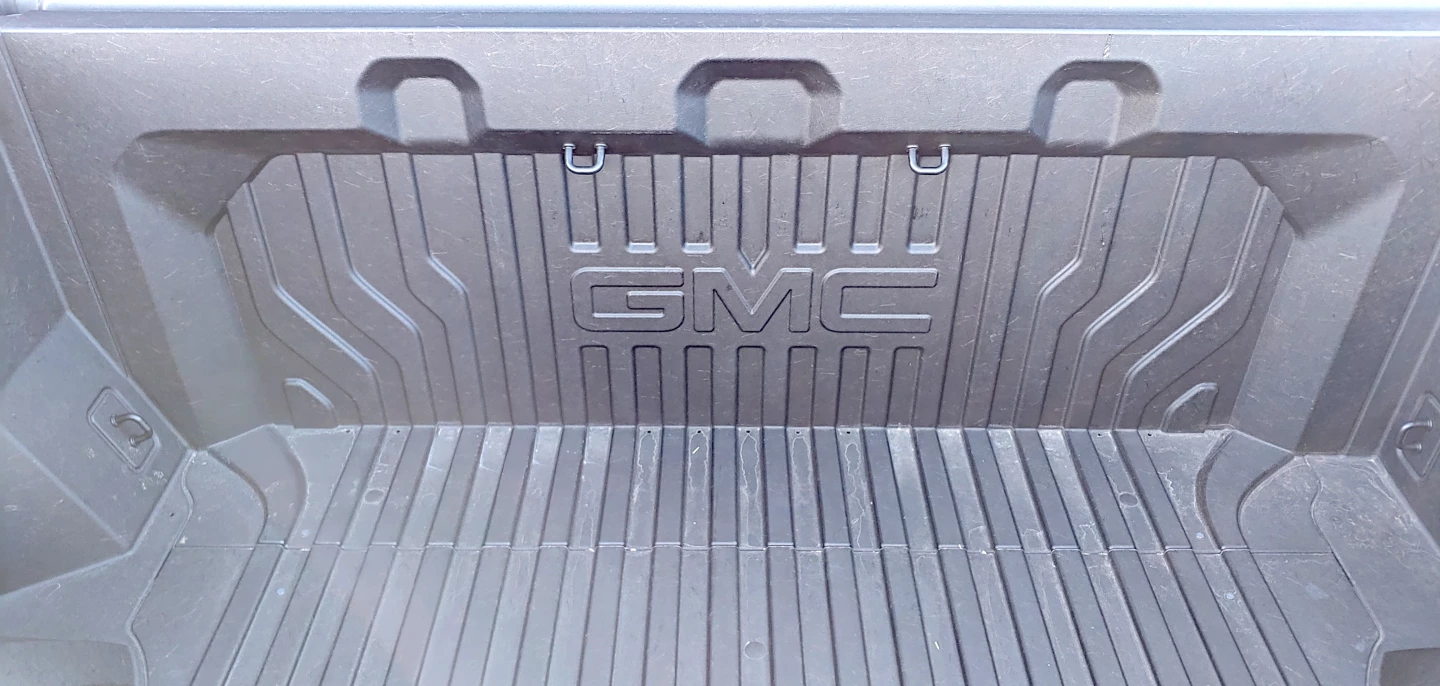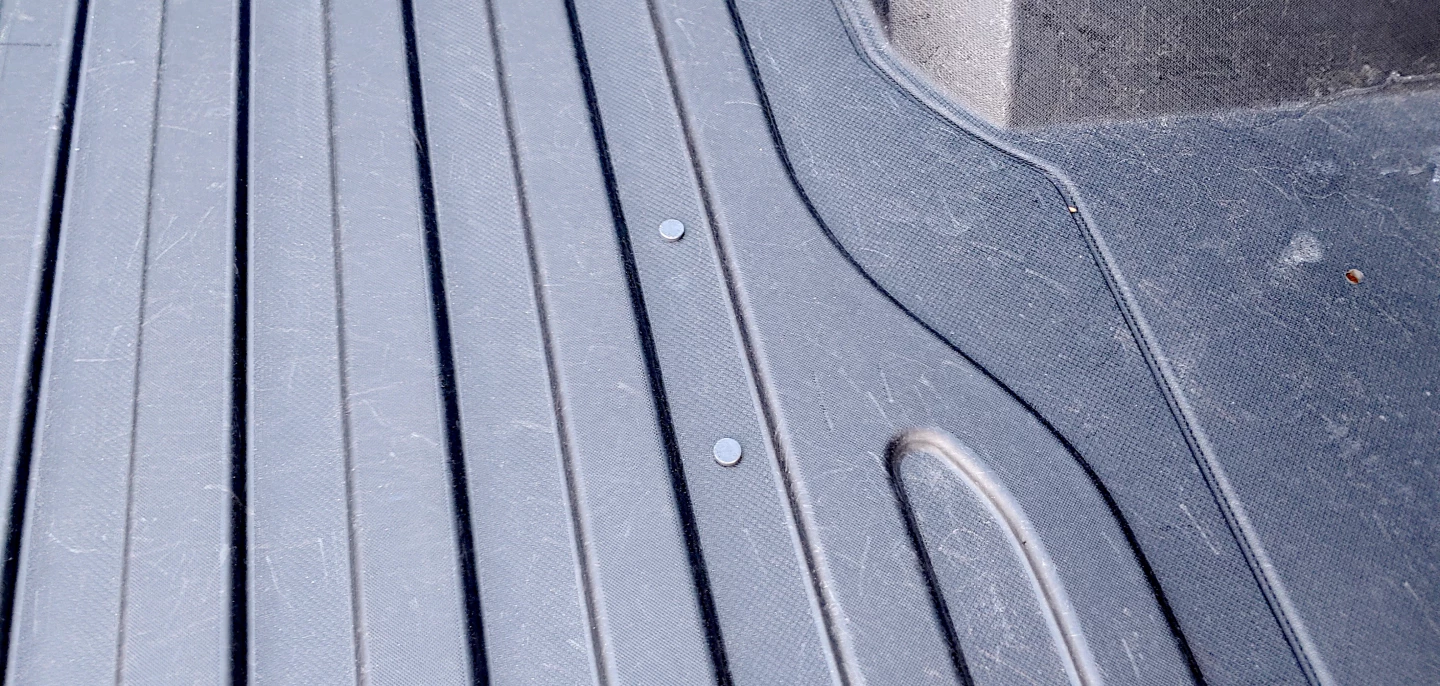One of the options on the 2020 GMC Sierra 1500 pickup truck is a carbon fiber bed called the CarbonPro. This bed replaces the usual steel interior of the truck bed with a specially formulated carbon fiber that’s both stronger and lighter in weight. We talked to an engineer at General Motors, and tried the bed out for ourselves.
To start, GMC made some changes to the 2020 model year Sierra 1500. The truck was introduced for its all-new fourth generation in 2019, with 2020 seeing a new turbodiesel engine option, a 10-speed automatic transmission option, cameras for help hitching to and towing trailers, and driver assistance upgrades. Also new is the optional CarbonPro bed.
More than a bedliner, the CarbonPro replaces the truck’s bed entirely, putting carbon fiber in place of steel. It can be added to either the AT4 off-road package (as we had) or the top-trim Denali package.

How much punishment can it take? A lot, it turns out. GM put the CarbonPro to drop tests, with materials being dumped into the bed from a height. The company also performed corrosion tests, drove a snowmobile into it (tracks and all), exposed the CarbonPro to extreme temperatures for extended lengths of time, and even put a gas generator (with its high heat output) on the bed to see if the carbon would warp. All passed without incident. A quick search of the web shows journalists and others pounding the truck bed with baseball bats, sledgehammers, and more. We threw cinder blocks into it to see if it'd scratch. All proof that GMC's CarbonPro is what the company says it is.
So what makes this CarbonPro bed so great? It’s all in the weave. The formula and weave being used for the GMC truck’s bed is not the same as that used for supercars or for sports car upgrades.
"[Most] exotic bodywork is woven carbon fiber and resin, which is light but doesn’t have the strength necessary to service as a pickup bed," Voss explains. "CarbonPro is made of carbon fiber-reinforced nylon, with the carbon element being 1-inch randomly-oriented fibers. In addition to its strength, this material can be heated and reformed, allowing us to recycle scrap material. A large press allows the material to have the corrugation and grippy texture of the bed’s floor panel.”
This means no bed liner is required, increasing cargo space. GMC says that the total savings amounts to about one cubic foot of extra space in the bed.
Additionally, the unique formulation of the carbon fiber being used in the CarbonPro allows for recycling. "In fact, we’re doing it every day at the production facility,” Voss says. “The scrap shavings from each component are collected and recycled.” These materials, it turns out, are what are used for the corner stakes that join each portion of the truck’s bed.

Because the carbon fiber being used for the GMC truck’s bed is not just tough, but completely malleable during the production process, we wondered about customization possibilities. Voss says that GM has no plans to offer different bed configurations, but the current design is intended to accommodate the front wheels of two motorcycles at the head and two-by-four lumber crossbars along the truck bed, for securement and customization. The costs of further customization for relatively small markets would be prohibitive, Voss says. He cannot comment on the idea that aftermarket suppliers might be able to license GMC’s formula to do so. He also can't state whether the CarbonPro bed could appear in other trim options for the GMC Sierra pickup truck.
As far as weight savings go, the CarbonPro bed doesn’t do much to reduce the heft of the Sierra. It’s only a 62 lb (28 kg) weight loss to get this bed, which won’t translate to much in fuel economy. Most of the benefits are elsewhere.
For example, the CarbonPro bed cannot be easily scratched (being more durable than even a steel bed with spray-in liner), doesn’t rust, and has drain holes built-in. On the first point, weight savings for the CarbonPro bed versus a steel bed are, as stated, 62 pounds, but a steel bed with spray-in liner would be almost 100 lb (45 kg) heavier. On the last point, drain holes don’t require rubber grommets, or for the truck to be parked on a tilt to get water out of the bed.
Is the upgrade worth it? That’s up to the consumer to decide, but it’s clear that the CarbonPro bed has some upsides. Especially for those who work with their truck for a living.
Source: 2020 GMC Sierra 1500













